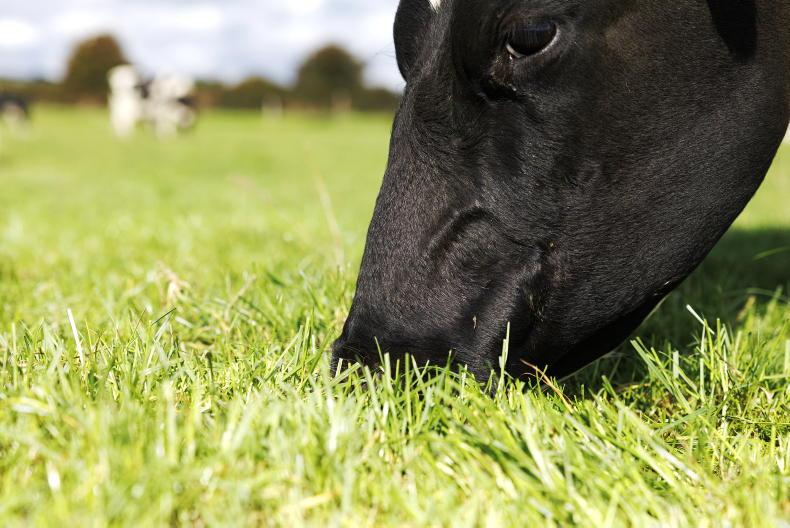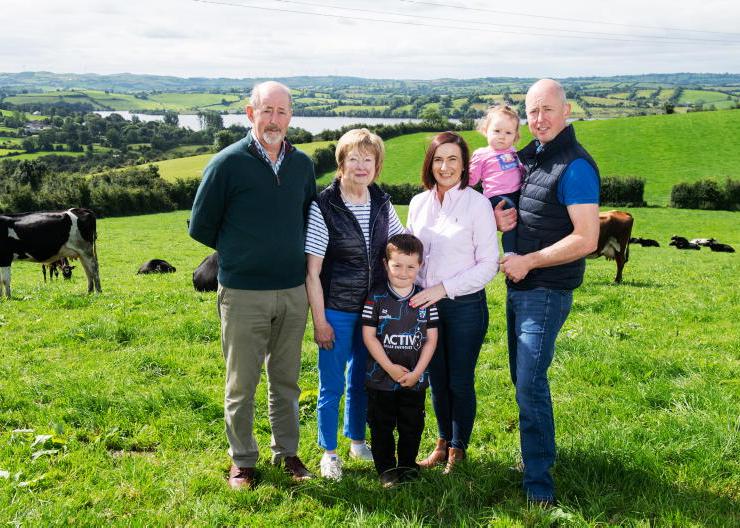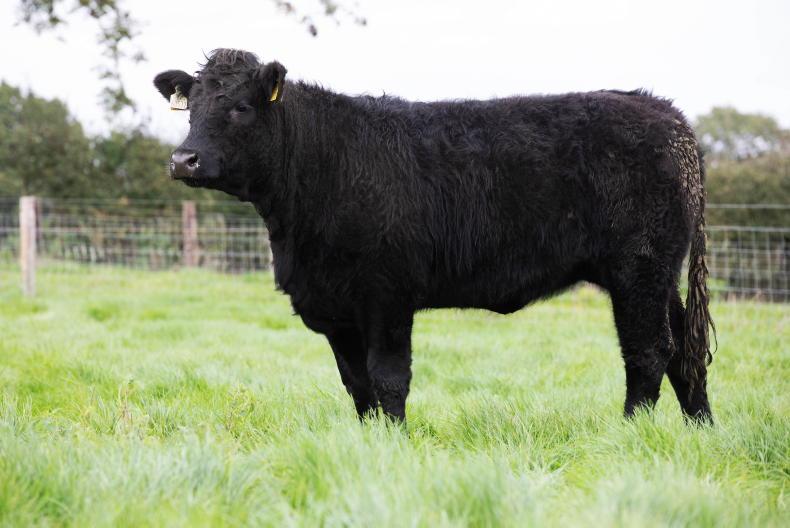If you take storm Éowyn out of the equation, it hasn’t been a bad start to 2025 weather-wise. Drier conditions, particularly in the south of the country, have meant some weanlings already started the 2025 grazing season. A lot can happen in the next month, but it’s great to see some cattle out all the same. Further north, a lot of farms are still a few weeks off turnout, but that doesn’t mean weanlings can’t venture out where ground conditions allow and where grass supplies are good.
Silage 2025
While the silage season may be a long way from farmers’ minds in February, one of the most important things to do is secure enough silage for next winter. The first cut of silage will be the most efficient way of doing this. Regardless of fertiliser prices or the cattle trade, nobody wants a fodder deficit in spring 2026 and not be able to either secure or purchase enough fodder for your animals.
Sit down and complete a budget for the number of animals you think you will have on hand next winter.
Suckler farmers can work off a rough estimate of 1.5 bales per cow, per month. In general, a good first-cut sward will yield seven to 10 bales/acre, while a second cut will yield five to seven bales/acre.
When you get the number of tonnes or bales that you need, add in 10% for a contingency plan for a late spring in 2026. April and May are two of the best months in the year for growing grass, so it makes sense to close up as much silage ground as possible during these two months.
Aim to close up 40% to 50% of the farm for first-cut silage. Paying a contractor €120/ac to cut a 6t/ac crop isn’t good value, so make sure your silage ground is well fertilised for a decent crop of silage in 2025.
Slurry
Slurry should be treated like a fertiliser every year and in an era of high fertiliser prices, it has never been more important to make sure you are getting all the nutrients you can out of slurry. All farms stocked over 100kg/N/ha have to use Low Emission Slurry Spreading (LESS) machines to spread slurry. Spreading via LESS will also mean you maximise the amount of nutrients you get back from your slurry.
Taking a look at slurry values, 1,000 gallons of cattle slurry at 6% dry matter (standard value) will have nine units of nitrogen, five units of phosphorus and two units of potassium. That means if you spread 3,000 gallons of slurry/acre, you are spreading all the P and K require via slurry and 27 units of nitrogen/acre.
One 50kg bag of urea per acre would then top the nitrogen up to just over 80 units/acre, which would suffice for first-cut silage on older swards. In terms of slurry going onto grazing ground, if fields have been grazed late in 2024 and have a low cover, this is ideal ground for a first application of slurry.
Aim for an application of fertiliser on swards that have a medium cover of grass (6-8cm) while swards that have heavy covers (10-12cm) can be grazed and then slurry or fertiliser applied after grazing.

Dairy farmer Martin Kennedy spreading slurry on grazing ground at Garnafana, Toomevara, Co Tipperary, at a rate of 2500 gallons to the acre. \ Odhran Ducie
Lime and slurry
Soil pH isn’t where it needs to be on a lot of drystock farms. Some improvements have been made since fertiliser prices went up in the last few years, but more is needed. Correcting soil pH will ensure that any fertiliser spread will have a better chance of actually working and growing grass.
The soil pH on grassland farms should be 6.3. Lime can be purchased and spread for €25/t, so it’s one of the cheapest fertilisers you can spread in 2025.
Limed soil also has the effect of mobilising nitrogen from the soil, so you will likely get a kick from this in grass growth after spreading. There are a few interactions to be aware of:
How long should one leave between spreading fertiliser N and slurry? Slurry applied after fertiliser N has been applied creates ideal conditions for denitrification, ie anaerobic conditions. It is recommended to leave four to seven days before or after slurry spreading for application of fertiliser.How long should you leave between spreading lime and urea? Lime increases soil pH, which increases the rate of volatilisation of ammonia. Do not spread urea for three to six months after lime application.How long should one leave between spreading urea/slurry and lime? Where urea is spread in advance of lime, it will eliminate the risk of N loss through volatilisation. It is recommended to leave 10 days between applying urea and lime.How long should you leave between spreading slurry and fertiliser N? Where fertiliser is spread directly after slurry application, it will result in a loss in N. It is recommended to leave four to seven days between the application of fertiliser N and slurry. It shouldn’t take expensive fertiliser to correct soil pH on farms, but paying for fertiliser over the last few years that didn’t work is helping correct pH on some farms. Grazing plans
A farm stocked at 2,000kg/ha will need 40kg of dry matter growth/ha on a daily basis to meet demand. A well-fertilised sward is capable of growing 50kg to 70kg/DM/ha during this time, but that’s on a well-fertilised sward with solid fertility up to scratch. You will also grow a lot more grass in a paddock grazing system, as opposed to set stocking. This doesn’t need to be an elaborate set up with posts and high-tensile wire.
All you need is some temporary electric fences and a few well-placed drinkers to adopt a graze-and-rest or paddock grazing system. This will keep grass quality a lot better as well, and allow any strong paddocks to be taken out for grazing. It will allow you identify a deficit a lot quicker, so you can take action like spreading more fertiliser, etc.
While the temptation to spread very little fertiliser on some drystock farms will be there, this is a false economy. Running out of grass, resulting in poor thrive or having to go in and supplement with concentrates at €350/t, doesn’t make sense.

A huge increase in animal output can be gained with good grazing management and earlier turnout. Not only is grass a lower-cost feed, but the slurry generated is reduced with a longer grazing season. Achieving an extra day at grass for the suckler cow is worth on average €2/cow/day.
Obstacles
Two of the main obstacles to achieving more days at grass, especially in early spring, are poor soil conditions and periods of high rainfall. If animals stay in the paddock, treading damage caused on heavier soils or during periods of heavy rainfall can result in reduced growth rates (up to 20% lower) during subsequent grazing rotations.
Allowing animals access to pasture for a few hours per day (on/off grazing) has been shown to maintain high levels of performance when compared with grass silage-based diets, and may be a strategy that can be implemented to extend grazing season length. Traditionally, fattening diets have been focused on high grass silage combined with concentrates. With core prices envisaged to stay strong, beef farmers could focus on producing more carcase output from pasture and lower costs to maximise profit.
Animal performance increases, of both finishing and store cattle, from early turnout are substantial. Research work at Teagasc has shown that animals turned out early to grass have 6% (+23kg) higher carcase weight than animals turned out later in spring. At today’s prices, this could equate to close to €150 to €160/head.
Grazing output
A huge increase in animal output can be gained with good grazing management and earlier turnout. Not only is grass a lower-cost feed, but the slurry generated is reduced with a longer grazing season.
Achieving an extra day at grass for the suckler cow is worth on average €2/cow/day. It is clear that major efficiency gains can be made with early turnout.
The goal with spring grazing is to ensure that priority stock have first access to grass, ie the stock that will make most economic use of the available pasture and reduce their days to finish.
Unlike a dairy farm, a beef farm has the opportunity to turn out stock in smaller numbers. This can be advantageous in targeting high grass utilisation. As the saying goes, nothing ventured, nothing gained. Don’t be afraid to push the boat out and get a few cattle out, especially if you have a few dry fields conducive to early grazing. What’s the worst can happen? If they have to come back in after a few weeks, what about it.

Use a rough guide of 1.5 bales/cow/month for fodder budgeting. \ Donal O’Leary
If you take storm Éowyn out of the equation, it hasn’t been a bad start to 2025 weather-wise. Drier conditions, particularly in the south of the country, have meant some weanlings already started the 2025 grazing season. A lot can happen in the next month, but it’s great to see some cattle out all the same. Further north, a lot of farms are still a few weeks off turnout, but that doesn’t mean weanlings can’t venture out where ground conditions allow and where grass supplies are good.
Silage 2025
While the silage season may be a long way from farmers’ minds in February, one of the most important things to do is secure enough silage for next winter. The first cut of silage will be the most efficient way of doing this. Regardless of fertiliser prices or the cattle trade, nobody wants a fodder deficit in spring 2026 and not be able to either secure or purchase enough fodder for your animals.
Sit down and complete a budget for the number of animals you think you will have on hand next winter.
Suckler farmers can work off a rough estimate of 1.5 bales per cow, per month. In general, a good first-cut sward will yield seven to 10 bales/acre, while a second cut will yield five to seven bales/acre.
When you get the number of tonnes or bales that you need, add in 10% for a contingency plan for a late spring in 2026. April and May are two of the best months in the year for growing grass, so it makes sense to close up as much silage ground as possible during these two months.
Aim to close up 40% to 50% of the farm for first-cut silage. Paying a contractor €120/ac to cut a 6t/ac crop isn’t good value, so make sure your silage ground is well fertilised for a decent crop of silage in 2025.
Slurry
Slurry should be treated like a fertiliser every year and in an era of high fertiliser prices, it has never been more important to make sure you are getting all the nutrients you can out of slurry. All farms stocked over 100kg/N/ha have to use Low Emission Slurry Spreading (LESS) machines to spread slurry. Spreading via LESS will also mean you maximise the amount of nutrients you get back from your slurry.
Taking a look at slurry values, 1,000 gallons of cattle slurry at 6% dry matter (standard value) will have nine units of nitrogen, five units of phosphorus and two units of potassium. That means if you spread 3,000 gallons of slurry/acre, you are spreading all the P and K require via slurry and 27 units of nitrogen/acre.
One 50kg bag of urea per acre would then top the nitrogen up to just over 80 units/acre, which would suffice for first-cut silage on older swards. In terms of slurry going onto grazing ground, if fields have been grazed late in 2024 and have a low cover, this is ideal ground for a first application of slurry.
Aim for an application of fertiliser on swards that have a medium cover of grass (6-8cm) while swards that have heavy covers (10-12cm) can be grazed and then slurry or fertiliser applied after grazing.

Dairy farmer Martin Kennedy spreading slurry on grazing ground at Garnafana, Toomevara, Co Tipperary, at a rate of 2500 gallons to the acre. \ Odhran Ducie
Lime and slurry
Soil pH isn’t where it needs to be on a lot of drystock farms. Some improvements have been made since fertiliser prices went up in the last few years, but more is needed. Correcting soil pH will ensure that any fertiliser spread will have a better chance of actually working and growing grass.
The soil pH on grassland farms should be 6.3. Lime can be purchased and spread for €25/t, so it’s one of the cheapest fertilisers you can spread in 2025.
Limed soil also has the effect of mobilising nitrogen from the soil, so you will likely get a kick from this in grass growth after spreading. There are a few interactions to be aware of:
How long should one leave between spreading fertiliser N and slurry? Slurry applied after fertiliser N has been applied creates ideal conditions for denitrification, ie anaerobic conditions. It is recommended to leave four to seven days before or after slurry spreading for application of fertiliser.How long should you leave between spreading lime and urea? Lime increases soil pH, which increases the rate of volatilisation of ammonia. Do not spread urea for three to six months after lime application.How long should one leave between spreading urea/slurry and lime? Where urea is spread in advance of lime, it will eliminate the risk of N loss through volatilisation. It is recommended to leave 10 days between applying urea and lime.How long should you leave between spreading slurry and fertiliser N? Where fertiliser is spread directly after slurry application, it will result in a loss in N. It is recommended to leave four to seven days between the application of fertiliser N and slurry. It shouldn’t take expensive fertiliser to correct soil pH on farms, but paying for fertiliser over the last few years that didn’t work is helping correct pH on some farms. Grazing plans
A farm stocked at 2,000kg/ha will need 40kg of dry matter growth/ha on a daily basis to meet demand. A well-fertilised sward is capable of growing 50kg to 70kg/DM/ha during this time, but that’s on a well-fertilised sward with solid fertility up to scratch. You will also grow a lot more grass in a paddock grazing system, as opposed to set stocking. This doesn’t need to be an elaborate set up with posts and high-tensile wire.
All you need is some temporary electric fences and a few well-placed drinkers to adopt a graze-and-rest or paddock grazing system. This will keep grass quality a lot better as well, and allow any strong paddocks to be taken out for grazing. It will allow you identify a deficit a lot quicker, so you can take action like spreading more fertiliser, etc.
While the temptation to spread very little fertiliser on some drystock farms will be there, this is a false economy. Running out of grass, resulting in poor thrive or having to go in and supplement with concentrates at €350/t, doesn’t make sense.

A huge increase in animal output can be gained with good grazing management and earlier turnout. Not only is grass a lower-cost feed, but the slurry generated is reduced with a longer grazing season. Achieving an extra day at grass for the suckler cow is worth on average €2/cow/day.
Obstacles
Two of the main obstacles to achieving more days at grass, especially in early spring, are poor soil conditions and periods of high rainfall. If animals stay in the paddock, treading damage caused on heavier soils or during periods of heavy rainfall can result in reduced growth rates (up to 20% lower) during subsequent grazing rotations.
Allowing animals access to pasture for a few hours per day (on/off grazing) has been shown to maintain high levels of performance when compared with grass silage-based diets, and may be a strategy that can be implemented to extend grazing season length. Traditionally, fattening diets have been focused on high grass silage combined with concentrates. With core prices envisaged to stay strong, beef farmers could focus on producing more carcase output from pasture and lower costs to maximise profit.
Animal performance increases, of both finishing and store cattle, from early turnout are substantial. Research work at Teagasc has shown that animals turned out early to grass have 6% (+23kg) higher carcase weight than animals turned out later in spring. At today’s prices, this could equate to close to €150 to €160/head.
Grazing output
A huge increase in animal output can be gained with good grazing management and earlier turnout. Not only is grass a lower-cost feed, but the slurry generated is reduced with a longer grazing season.
Achieving an extra day at grass for the suckler cow is worth on average €2/cow/day. It is clear that major efficiency gains can be made with early turnout.
The goal with spring grazing is to ensure that priority stock have first access to grass, ie the stock that will make most economic use of the available pasture and reduce their days to finish.
Unlike a dairy farm, a beef farm has the opportunity to turn out stock in smaller numbers. This can be advantageous in targeting high grass utilisation. As the saying goes, nothing ventured, nothing gained. Don’t be afraid to push the boat out and get a few cattle out, especially if you have a few dry fields conducive to early grazing. What’s the worst can happen? If they have to come back in after a few weeks, what about it.

Use a rough guide of 1.5 bales/cow/month for fodder budgeting. \ Donal O’Leary













SHARING OPTIONS